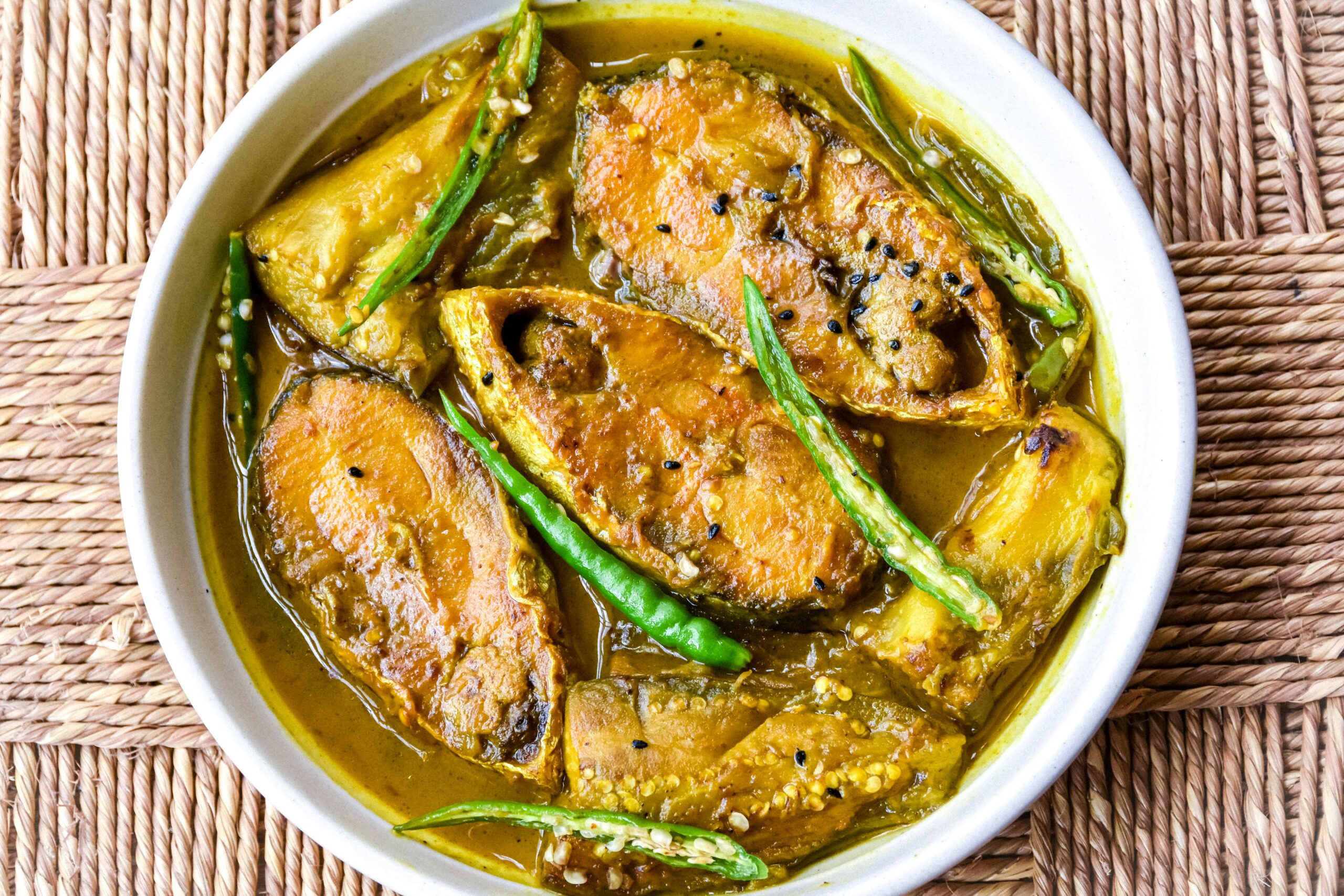Cultural Insights, Travel
The Taste of Bengal: Introduction to Bengali Cuisine

If you’ve ever had a Bengali meal, you know it’s something special. It’s not just about the food — it’s about tradition, comfort, and love for flavor. Bengali cuisine comes from the eastern part of the Indian subcontinent, especially West Bengal and Bangladesh, and it has a style of its own.
Rice and Fish: A Daily Duo
Let’s start with the basics: rice and fish. For most Bengalis, this is the basic everyday meal. It’s simple, filling, and comforting. There’s even a saying “মাছে ভাতে বাঙালি” (Machh-e bhat-e Bangali”, which means “Bengalis are made of fish and rice.”
You’ll find all kinds of fish in Bengal, but hilsa (ilish), rohu (rui), and catla are among the favorites. One of the most famous dishes is shorshe ilish – hilsa cooked in a mustard sauce with mustard oil. That strong mustard flavor is a signature in many Bengali dishes.
Meals Have an Order
A typical Bengali meal is served in a certain order, not all at once. You usually start with something light and maybe slightly bitter (like shukto, a mixed vegetable dish), then move on to lentils (dal), vegetables, fish or meat, and finally something sweet. This structure creates a balance, making the food neither too heavy nor too spicy.
Vegetarian Food Has a Big Role Too
Even though fish is important, there are tons of vegetarian dishes that are just as popular. Fried eggplant slices (begun bhaja), bottle gourd with shrimp (lau chingri), and mashed vegetables with mustard oil and green chili (bharta) are some common ones.
Lentils, especially yellow moong dal or red masoor dal, are everyday staples. They’re often served with rice, a spoonful of ghee, and maybe a fried chili on the side.
Bengalis Love Their Sweets
If there’s one thing Bengalis are proud of, it’s their sweets. And they’re not just for special occasions—they’re for everyday joy too.
You’ve probably heard of rosogolla (soft, white, syrupy balls made from fresh cheese), mishti doi (sweet yogurt), or sandesh (a light, milky sweet). They’re all made from chhena, a form of fresh curdled milk. Each one is soft, rich, and sweet – without being too sugary.
Food Is Part of Every Occasion
In Bengali culture, food is tied to everything: festivals, weddings, even religious rituals. During Durga Puja, for example, people eat special meals that include khichuri (rice and lentils), fried vegetables, and chutney. At weddings, there’s always a feast, with dishes like prawn curry, mutton, and lots of sweets.
It’s Worth Exploring!
Bengali food is comforting and full of flavor without being overwhelming. It’s very balanced, fresh, and involves many home-cooked traditions. And there’s a big variety! From simple dal with rice to a rich fish curry.
If you ever get a chance to try Bengali cuisine, at a restaurant or in someone’s home, go for it! And definitely leave room for dessert!
Latest Posts
- All Posts
- Bengali
- Cultural Insights
- Hindi
- Immersion
- Language & Linguistics
- Language Resources
- Learn Bengali With Songs
- Learning Tips & Strategies
- Travel

